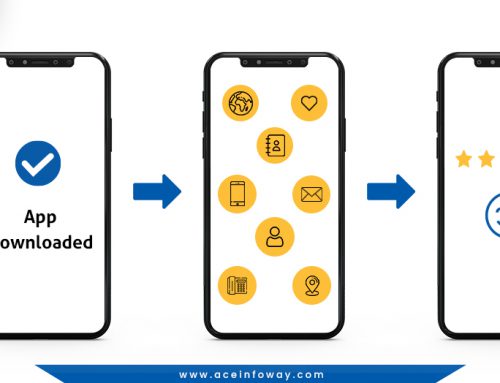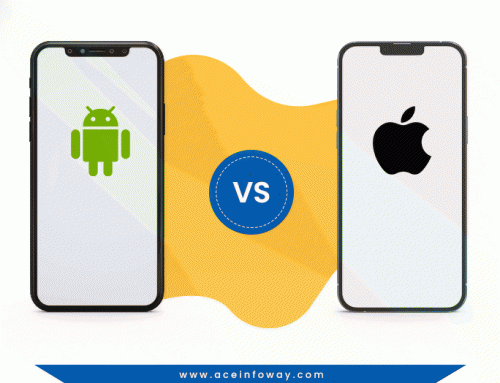Table of Contents
React Native, an open-source framework for native mobile application development with React JS was created by Facebook. The prime focus of React Native is to combine the Native Mobile App experience at the user end, using the native UI components, along with the React Web App experience at the developer end, using similar components as React JS.
“Learn Once, Write Anywhere”, the React Native motto – clearly reflects the working principle of Cross-Platform Development, enabling a developer skilled in a certain technology to create an effectual mobile application for different platforms, instead of learning multiple languages.
The magnifying popularity of React Native since its release in 2015, is making it the choice of beginners as well as tech goliaths like Facebook, Instagram, Myntra, Tesla, Skype, UberEats, etc, can be clearly traced through these stats.
– Github – 86.1K Stars and 19.2 Forks
– Stack share – 9.4K Stacks and 8.4K Followers
If you are also planning to join the community and switch to React Native, here we have listed the advantages of React Native that makes it stand out from the other Mobile App Development Frameworks.
Advantages of React Native over other Frameworks
To extract a glimpse of the advantages of choosing React Native for your Mobile Development Project from Xamarin vs React Native, it is well said that React Native is packed with Application Flexibility, Scalability, Community Support, Application performance, Compatibility with the heavy graphics, Tools for IOS and Android, etc. So, taking it further, let’s check out the efficiencies of React Native in this field.
• Cost-Effective
The cost for Android and iOS application development and maintenance is quite high, which has been a matter of concern for the companies. React Native, being a cross-platform development framework, proves to be a profoundly cost-effective solution, enabling you to restrain the cost by designating a single native developer for the application instead of hiring one for each technology.
It also lessens the expenses on the licenses of the IDEs for coding due to the availability of various free IDE options available for React Native, dissimilar to Xamarin which expects you to buy the license of the Visual Studio to work upon.
• Native Experience
The best feature of React Native, unlike other frameworks like Ionic and PhoneGap, is the Native experience provision. Ionic and PhoneGap use HTML/CSS, allowing you to make calls to the native apps, however, the smoothness of the basic functions like the keyboard, maps, navigation, camera, etc, cannot be promised.
React Native, on the contrary, directly interacts with the native UI widgets, rather than using Web View Component or making calls through the HTML code to the pre-existing native apps or creating the replicas of native apps. Among the numerous framework options available for mobile app development, React Native performs best for the UI intensive applications by far.
• Foreseeable Future
With the strong backing from Facebook, React Native is ruling the market and will continue to do so in the future as well. Facebook has been actively working on React Native and has already released various successful stable versions ranging from version 0.5 to version 0.62. The popularity and the reliance of the App Development companies on the framework, clearly hint towards the foreseeable future of React Native.
• Ecosystem
React Native has a humongous ecosystem comprising a colossal community, an affluent library, and powerful support. React Native, being a JavaScript-based framework and a product of Facebook, has inherited a bundle of advantages of the React JS such as the properties and features of React JS, the existing community, reliability, etc.
Along with the access to the React JavaScript Library, React Native also uses the React JS functionalities like discrete programming, wrapping up of the DOM(Document Object Model) internal function and changes through high-level abstraction, replacing the
and rendering in the HTML websites with the rendering to the native UI components and lot more. The ecosystem of React Native, making it the most feasible option for Mobile App Development, plays a major role in the success and popularity of the framework.
• Shorter Learning Curve
If you have ever worked with JavaScript and React, you can easily work on React Native and comprehend the related concepts. React Native does not require you to master multiple technologies such as C# and Visual Studio for Xamarin, HTML/CSS for Ionic and PhoneGap, Dart for Flutter, etc, making the app development process a lot easier for the fledglings as well as the professionals, enabling them to work on their creative skills rather than battling with technical subtleties of the languages and the frameworks.
• Faster Development Process
React Native is known for some of its incredible features such as code reusability, cross-platform development, Fast refresh, etc, speeding up your Mobile Application development process that fits in your budget. The code reusability empowers you to use the discrete modules of one project to another project as per the requirement, instead of re-coding it again. Also, you can use the same React Native components on the Native web project as well, eventually making the process faster.
Fast Refresh, earlier available as the Live Reloading and Hot Reloading feature in React Native previous versions, is also a prominent reason behind such speed. The feature liberates you from the hassle of refreshing the application manually, every time you roll out a change to the codebase, rather it automatically refreshes the app itself, reflecting the change faster.
• Live Update without the App Store Approval
App Store approval is the most thwarting thing for a developer/company. React Native comes as a rescue here, making it conceivable to update your application codebase remotely through AppHub, instead of following a complete process of submitting the updated version of your app to the App Store and then waiting for its approval, as you do in case of frameworks like Flutter.
• Great Third-Party React Native Component Libraries
Along with the pre-existing library, React Native empowers the developers to append the Third-Party Component Libraries and UI toolkit as well, with the flexibility to customize the components and third-party plug-ins as per the requirement. The React Native Community is growing with the passing time, thereby providing various UI Component Libraries which include numerous cross-platform components compatible with the React Native, such as UI Kitten, Native Base, React Native Material Kit, React Native Vector Icons, etc. These components liberate you from re-coding, every time you need a module, rather allows you to pick one from these library shelves and speed up the process.
Ready to Leverage React Native in your next Mobile Development Project
With its fair share of qualities and shortcomings, and considering the unprejudiced assessment, React Native has clearly come out as the victor among various alternatives such as Ionic, PhoneGap, Flutter, Xamarin, etc.
React Native, with so many astounding features as mentioned in the articles, is considered one of the best choices for the Cross-Platform Mobile Application Development. Without further ado, hire a React Native Developer and get your Mobile application built on React Native and experience the success with ease. For any further related queries or services, feel free to Get In Touch with us.


























Leave A Comment